Seed Germination Project – Creative CLIL
Anastasia Bykova, Russia
Anastasia Bykova is an English teacher and a Director of Studies at Nova School of English, who is currently running a project ‘English as a Native Language’ ( www.facebook.com/native64/, started in 2015) for young learners, aged 3 to 7. Oral Assessor / Interviewer for Pearson Test of English. Interested in English Language Teaching and its trends, CPD. Enjoys teaching young learners, reading, art, music and DIY. E-mail: anastasiya_bykova@english-nova.ru
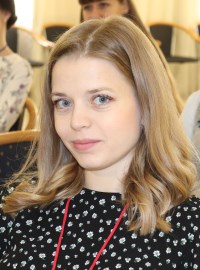
Menu
Introduction
The project
Creativity plays a great role in my classroom. Both the teacher and the students can benefit greatly from it. Creativity is one of those factors that enhances language development in general and engages the students in the learning process.
In terms of foreign language acquisition using and adapting some creative ideas in the classroom bring positive emotions into the class. And as we tend to remember positively and emotionally charged events better than boring ones, creative ideas might contribute language learning process greatly.
Creativity helps to provide emotional atmosphere and create the space and opportunities to use the target language and make most of it. We teach English in the project through different activities such as math and literacy, dramatic play, storytelling, creative reading, arts and crafts, and science as well.
The space of creativity might also allow and encourage your students to develop and explore their own creativity and get them more involved in the learning process. If we take storytelling in my classroom, as an example, introducing a story sack from time to time makes storytelling more exciting for children as there is always a mystery about what story can be and what characters might appear out from the sack the next moment. A simple story sack makes children be concentrated and engaged in the process all throughout the story. They also enjoy creating their own stories putting random characters or toys in the sack and then presenting the story to the rest of the kids.
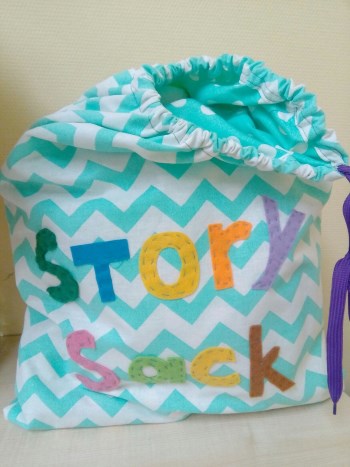
Whether it concerns writing, math, science or reading activities, creative elements are able to turn the most boring activities into something your students would always enjoy. If we look at writing activities, they might be quite challenging for 3 or 4-year-old children. Introducing a written request for the coloring pages or printouts children would like to have, putting the request in an envelope and then waiting for the teacher’s reply makes writing much more enjoyable. Or when we do the phonics reading, there is always a volunteer every day, who writes down the phonics on the blackboard practicing both writing and reading.
Teaching English beyond the course books and using creative elements encourage students to acquire the foreign language experientially not by instructions or study. Children absorb the language within the social settings and the projects we create for them in the classroom.
Creativity makes classes and life of a teacher in general more interesting and broadens both the children’s and the teacher’s horizons. It might teach you and your students new skills and critical thinking that they might apply in the future, which can be truly beneficial in their study, work and life in general.
Teaching very young learners every day allows doing different projects in English. Here is the project on Seed Germination we do in spring, which consists of several stages:
- First, we look at parts of a flower and a seed and its structure as well and find out where most plants come from. With the help of the cards we match the parts of the flower and the words. Then we draw our own seed structure, color and label it. ( 50 min)
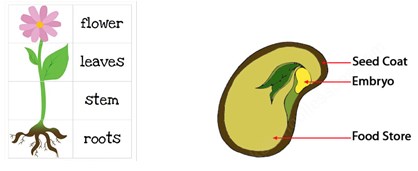
- We also look at the stages of growth and conditions needed for a plant to grow. And every child gives a little presentation on this felt board we created to demonstrate how a plant grows. ( 50 min)
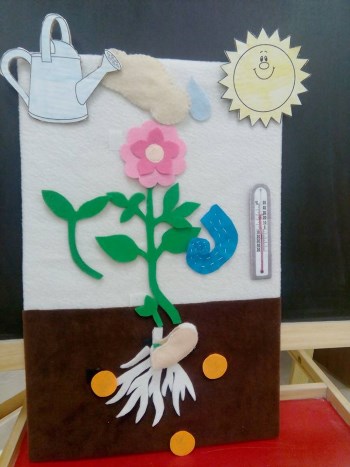
- We take broad beans and cut them open and check if its inner part corresponds to the seed structure we drew before. Then we plant the beans in transparent CD boxes, so we can watch the growth, tape them and put them on the windowsill. ( 50 min) As we see the changes, we start labeling the plant.
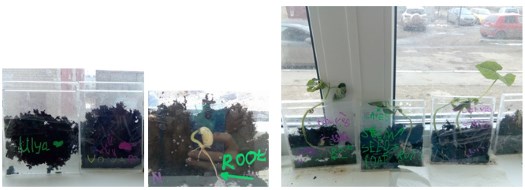
- We keep seed journals and write down all the changes we see every day within 2 weeks, developing writing skills as well.
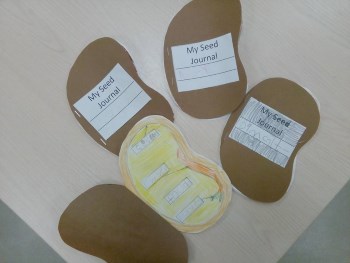
- We watch a story “The little seed” (50 min) (Günter Gerngross, Herbert Puchta, (2009) Playway to English Level 1, 2nd Edition, Cambridge University Press)
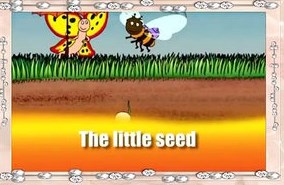
And then we tell this very story with the help of story cards. First the teacher tells the story and stick the cards to the board, then every child does.
(Günter Gerngross, Herbert Puchta, (2009) Playway to English Level 1, 2nd Edition, Cambridge University Press)
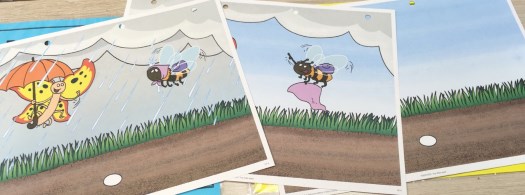
- We create the characters from the cartoon “The little seed” from modeling clay together with children to make a clay animation later, and draw the background. ( 50 min)
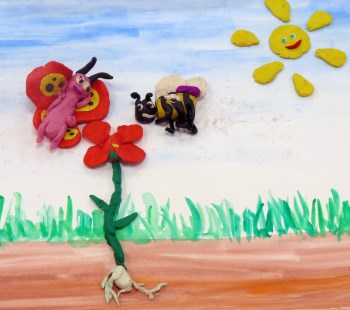
- We start snapping the characters. ( 50 min)
- We record the lines of each character and dub the cartoon later. ( 50 min)
We put all the shots and recordings together in some video editing software.
Here is the outcome of the project: https://www.youtube.com/watch?v=SrDEy4OHOnU&t=3s

Please check the Methodology and Language for Kindergarten course at Pilgrims website.
Please check the Methodology and Language for Primary course at Pilgrims website.
Please check the CLIL for Primary course at Pilgrims website.
Please check the Creative Methodology for the Classroom course at Pilgrims website.


|